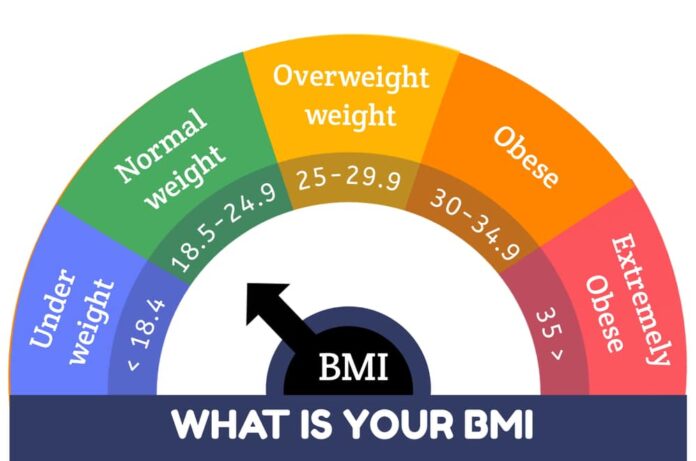When it comes to maintaining a healthy lifestyle, understanding key health metrics can help you make informed decisions. One such metric is the Body Mass Index (BMI). If you’ve ever wondered how to calculate BMI, this guide will walk you through everything you need to know, from the formula to interpreting the results. Whether you’re looking to assess your weight status or track your fitness journey, calculating your BMI can be an essential step in your health routine.
What is BMI?
BMI stands for Body Mass Index, a simple measurement that helps assess if an individual is underweight, healthy weight, overweight, or obese. It takes into account both height and weight, making it a useful tool for identifying potential health risks associated with underweight or excess body weight.
Why is BMI Important?
BMI is a key indicator that helps healthcare professionals evaluate health risks associated with underweight, overweight, and obesity. Having a BMI within the normal range is linked to a lower risk of heart disease, diabetes, and other chronic conditions. On the other hand, an abnormal BMI, either too high or too low, can indicate potential health issues that require attention.
For example, a high BMI may signal obesity, which is associated with increased risk factors for conditions like hypertension, type 2 diabetes, and joint problems. Conversely, a low BMI may indicate malnutrition or other underlying health issues.
How to Calculate BMI
To calculate your BMI, you’ll need your weight in kilograms and your height in meters. The formula is:
BMI = Weight (kg) / Height (m)²
Here’s how to break it down:
- Step 1: Measure Your Weight Weigh yourself using a scale. Ensure your weight is measured in kilograms for accuracy in BMI calculation. If you use pounds, you can convert them to kilograms by dividing the number of pounds by 2.2046.
- Step 2: Measure Your Height Measure your height in meters. If your height is in centimeters, divide it by 100 to convert it into meters.
- Step 3: Apply the Formula Now, use the BMI formula to calculate your BMI. Take your weight in kilograms and divide it by the square of your height in meters. For example, if your weight is 70 kg and your height is 1.75 meters, the calculation would look like this:BMI = 70 / (1.75)² = 22.86
- Step 4: Interpret Your Results Once you have your BMI, it’s time to interpret the result. Use the following BMI categories to understand where you fall:
- Underweight: BMI less than 18.5
- Normal weight: BMI between 18.5 and 24.9
- Overweight: BMI between 25 and 29.9
- Obesity: BMI of 30 or higher
How to Calculate BMI for Children and Teens
For children and teenagers, BMI is interpreted differently. Since children are still growing, BMI measurements are adjusted for age and sex. Pediatricians use BMI percentiles to determine if a child is underweight, normal weight, overweight, or obese. This method compares the child’s BMI with others of the same age and sex.
Factors That Can Affect Your BMI
While calculating your BMI provides a snapshot of your weight relative to height, it’s important to keep in mind that BMI doesn’t account for other factors that influence health, such as muscle mass, bone density, or distribution of fat. For example, athletes may have a high BMI due to increased muscle mass, but they may not be overweight or obese.
Common Misconceptions About BMI
Many people misunderstand BMI as a perfect representation of overall health. While BMI is a useful tool, it has limitations:
- BMI doesn’t account for muscle mass: Muscular individuals may have a higher BMI but not carry excess fat.
- BMI doesn’t distinguish between fat distribution: Fat around the abdominal area is considered more dangerous than fat in other regions of the body.
- BMI doesn’t consider age or gender: These factors can influence how body fat is distributed.
Conclusion
Now that you know how to calculate BMI, you can use this simple tool to assess your body weight in relation to your height. Whether you’re aiming for weight loss, weight maintenance, or simply monitoring your health, knowing your BMI is a great first step. However, remember that BMI should be considered alongside other health metrics and professional advice for a complete picture of your health.
If you’re unsure about your BMI results or have concerns about your weight, it’s always a good idea to consult with a healthcare provider. With the right information and a balanced approach, you can use BMI as a tool to lead a healthier life.
READ MORE :- The Ultimate Weight Loss Diet Chart for Female.
READ MORE :- Benefits of Herbal Toothpaste for Healthy Smiles
READ MORE :- The Benefits of Herbal Shampoo for gorgeous hair.
READ MORE :- Benefits of Herbal Hair Oil for Healthier Hair
READ MORE :- How to Remove Dark Circles Effectively
READ MORE :- How to Gain Weight: Best Healthy and Effective Tips

